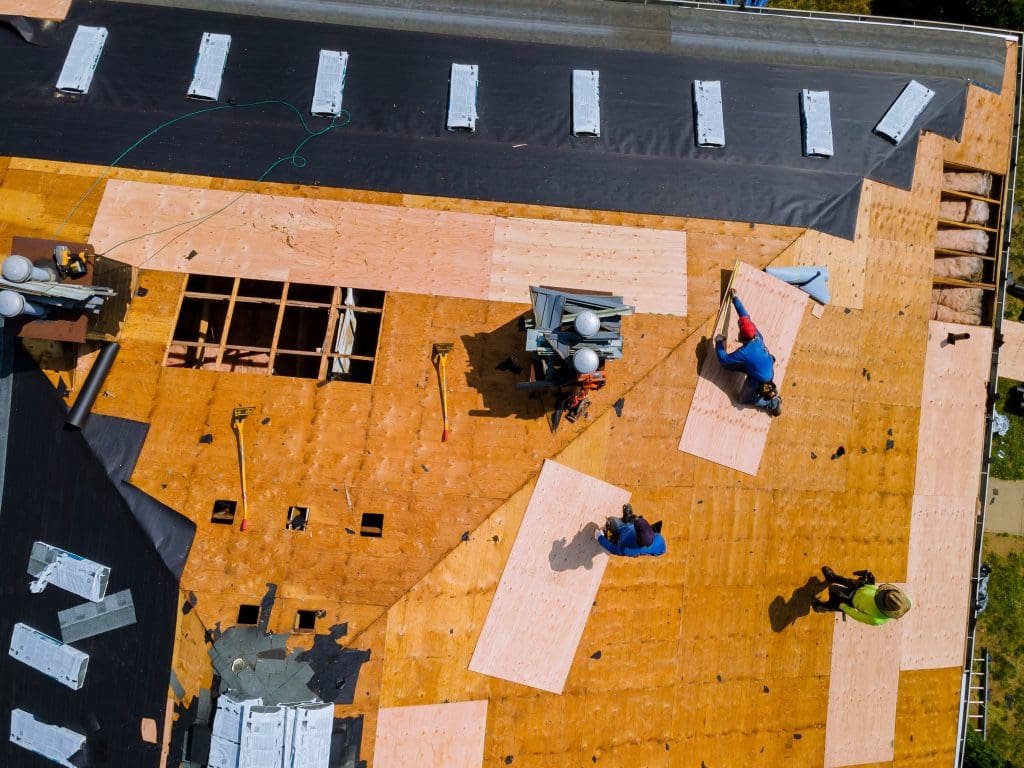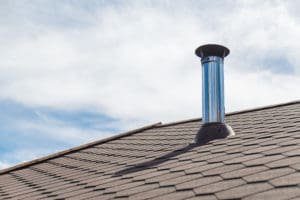Replacing a roof is a significant investment and a decision that should not be taken lightly. To help you navigate through this process, this guide aims to provide you with a comprehensive understanding of roof replacement. Whether you are a homeowner considering a roof replacement for the first time or someone looking to learn more about the process, this guide covers everything you need to know. From understanding the basics of roof replacement to hiring a roofing contractor, let’s dive into the details.
Understanding the Basics of Roof Replacement

Types of Roofing Materials
Before initiating the roof replacement process, it’s essential to be familiar with the different types of roofing materials available. The choice of roofing material greatly impacts the quality, durability, and appearance of your roof. Common roofing materials include:
- Asphalt shingles
- Metal roofing
- Wood shingles
- Slate tiles
- Tile roofing
Each type of roofing material has its own unique characteristics and benefits. Asphalt shingles are popular for their affordability and ease of installation, while metal roofing offers exceptional durability and energy efficiency. Wood shingles provide a natural and rustic look, perfect for traditional-style homes, and slate tiles are known for their elegance and longevity. Tile roofing, on the other hand, offers a wide range of colors and styles to suit different architectural designs.
The Importance of Roof Maintenance
Regular roof maintenance plays a crucial role in prolonging the lifespan of your roof and avoiding premature replacement. Preventative measures such as regular inspections, cleaning gutters, and keeping the roof free from debris are essential in identifying and addressing minor issues before they escalate. Proper maintenance can save you from costly repairs or even a full roof replacement.
Additionally, maintaining your roof can also help improve the energy efficiency of your home. A well-maintained roof with proper insulation and ventilation can prevent heat loss in the winter and keep your home cool in the summer, reducing your energy bills. By investing time and effort in roof maintenance, you not only protect your property but also contribute to a more sustainable and eco-friendly living environment.
Signs You Need a Roof Replacement

Age of Your Roof
The age of your roof is a primary factor in determining whether it’s time for a replacement. Most roofing materials have an estimated lifespan, and if your roof exceeds that timeframe, it may be prone to significant issues. If your roof is approaching or has exceeded its expected lifespan, it’s worth considering a replacement before problems arise.
Additionally, factors such as the climate in which you live and the maintenance history of your roof can also impact its longevity. Harsh weather conditions, such as heavy rainfall, snow, or extreme heat, can accelerate the wear and tear on your roof. Regular maintenance, such as inspections and repairs, can help extend the life of your roof. However, if your roof is showing signs of aging, it may be time to start planning for a replacement to avoid costly damages in the future.
Leaks and Water Damage
Leakage and water damage are clear indications that a roof replacement is necessary. If you notice water stains on your ceiling, peeling paint, or mold growth, it’s crucial to identify the source and address it promptly. Ignoring leaks can lead to more severe damage, compromising the structural integrity of your home.
In addition to the visible signs of water damage inside your home, it’s essential to inspect your roof regularly for any signs of leaks or deterioration. Missing or damaged shingles, sagging areas, or visible sunlight coming through the roof are all red flags that indicate the need for a replacement. Addressing these issues promptly can help prevent further damage to your home’s interior and ensure the safety and security of your property.
The Roof Replacement Process

Initial Inspection
When it comes to roof replacement, the first step is to have a thorough inspection by a qualified roofing professional. During the inspection, the roofer will assess the condition of your existing roof, identify any underlying issues, and provide recommendations for the replacement process. This evaluation helps determine the scope of work required and provides a more accurate estimate of the project’s cost.
Furthermore, the initial inspection is not just about assessing the current state of your roof. It is also an opportunity for the roofing professional to understand your specific needs and preferences. Factors such as your desired timeline for the project, any budget constraints you may have, and even aesthetic preferences can all be discussed during this phase. This ensures that the upcoming roof replacement is not only functional and durable but also tailored to your unique requirements.
Choosing Your New Roof
Once the inspection is complete, you will need to choose the right roofing material for your replacement. Consider factors such as durability, aesthetics, climate suitability, and budget when making your decision. It’s also advisable to consult with your contractor to ensure the material aligns with your preferences and meets local building codes.
Moreover, selecting a new roof is not just a practical decision but also a chance to enhance the curb appeal and value of your home. Different roofing materials offer varying levels of energy efficiency, maintenance requirements, and longevity. By carefully weighing these factors and discussing them with your contractor, you can make an informed choice that not only meets your immediate needs but also adds long-term value to your property.
The Installation Process
The installation process is a critical phase in the roof replacement journey. At this stage, your old roof will be removed, and the underlying structure will be inspected for any damaged areas that need repair. The new roofing material will then be installed following industry best practices and manufacturer guidelines. A well-executed installation is vital for the longevity and performance of your new roof.
Additionally, the installation process is where attention to detail and craftsmanship truly matter. Proper installation techniques, such as ensuring adequate ventilation and correct flashing around roof penetrations, can significantly impact the lifespan of your new roof. Experienced roofers pay close attention to these details to not only deliver a visually appealing roof but also one that provides reliable protection for years to come.
Cost Considerations for Roof Replacement

When considering a roof replacement, it is essential to take into account various factors that can influence the overall cost of the project. One crucial factor is the size and complexity of the roof. A larger or more intricate roof design will require more materials and labor, ultimately impacting the total cost. Additionally, the choice of materials plays a significant role in determining the cost. High-quality materials may come at a higher price but can offer better durability and longevity, potentially saving money in the long run.
Another factor to consider is the potential need for structural repairs. If underlying issues are discovered during the roof replacement process, such as rotting wood or damaged trusses, the cost of the project can increase significantly. It is essential to have a thorough inspection done before starting the replacement to uncover any hidden issues that may impact the final cost.
Factors Influencing the Cost
Several factors influence the cost of a roof replacement. The size and complexity of the roof, choice of materials, the need for structural repairs, and local labor rates all contribute to the final cost. It’s advisable to obtain quotes from multiple reputable roofing contractors to ensure you are getting a fair price for your project.
Ways to Finance Your Roof Replacement
If financing is a concern, there are several options available to help you fund your roof replacement project. These include personal savings, home equity loans, personal loans, and financing plans offered by some roofing companies. Carefully evaluate each option and choose the one that best suits your financial situation.
Hiring a Roofing Contractor

What to Look for in a Contractor
When selecting a roofing contractor for your roof replacement, it’s essential to do your research and choose a reputable and experienced professional. Consider the following factors:
- License and insurance coverage
- Experience and expertise
- Customer reviews and references
- Warranty offerings
Ensuring that the roofing contractor you select has a valid license and adequate insurance coverage is crucial. A licensed contractor has met the necessary requirements and regulations set by the state, demonstrating their commitment to quality and compliance. Insurance coverage, including liability and worker’s compensation, protects you from any potential accidents or damages that may occur during the roof replacement process.
Questions to Ask Your Potential Contractor
Before hiring a roofing contractor, ask them the following questions to ensure they are the right fit for your project:
- Are you licensed and insured?
- Can you provide references from previous clients?
- What warranty do you offer for your work?
- How long will the roof replacement process take?
- Do you have experience with the type of roofing material I have chosen?
It is essential to inquire about the warranty offered by the contractor for their work. A reliable contractor will stand behind their craftsmanship and provide a warranty that guarantees the quality and durability of the roof replacement. Additionally, understanding the timeline for the roof replacement process is crucial for planning and coordination, ensuring minimal disruption to your daily routine.
By asking these questions, you can gain confidence in your roofing contractor’s abilities and ensure a successful roof replacement project.
In conclusion, a roof replacement is a significant undertaking that requires careful consideration. Understanding the basics of roof replacement, knowing the signs that indicate a replacement is necessary, and following a proper hiring process will help you navigate this journey with confidence. Remember, a well-maintained and properly installed roof provides protection, insulation, and enhances the overall aesthetics and value of your home.




